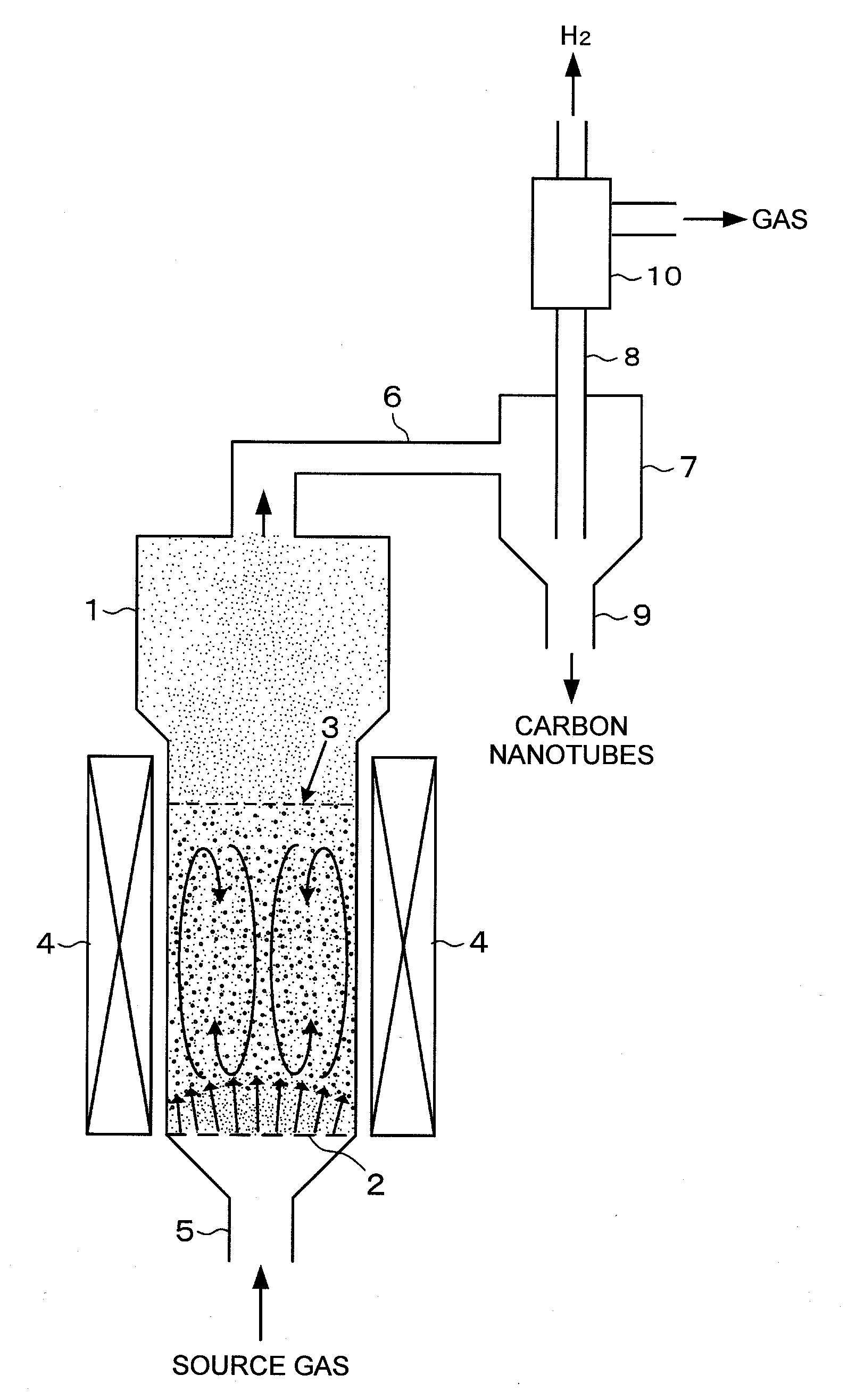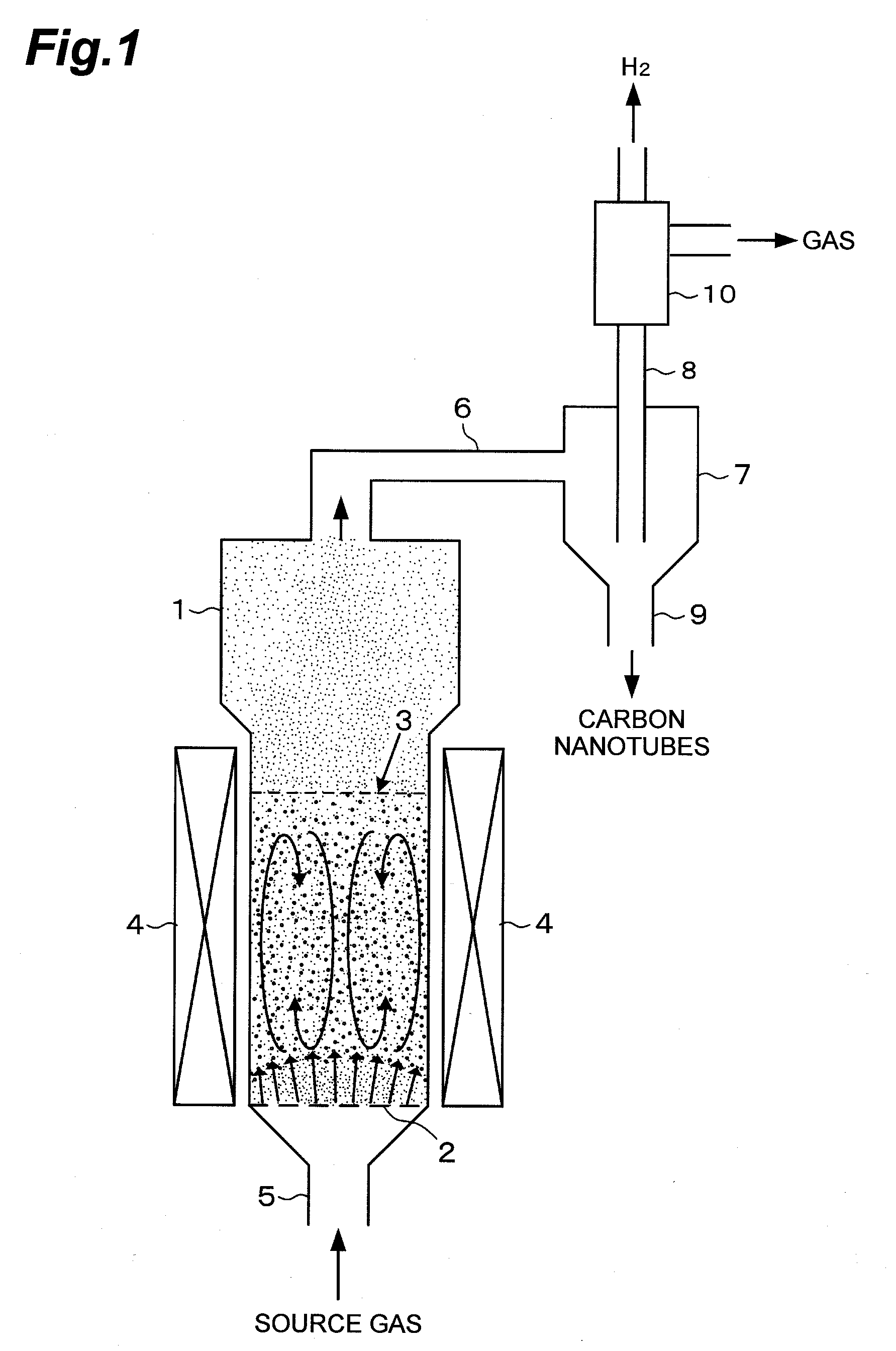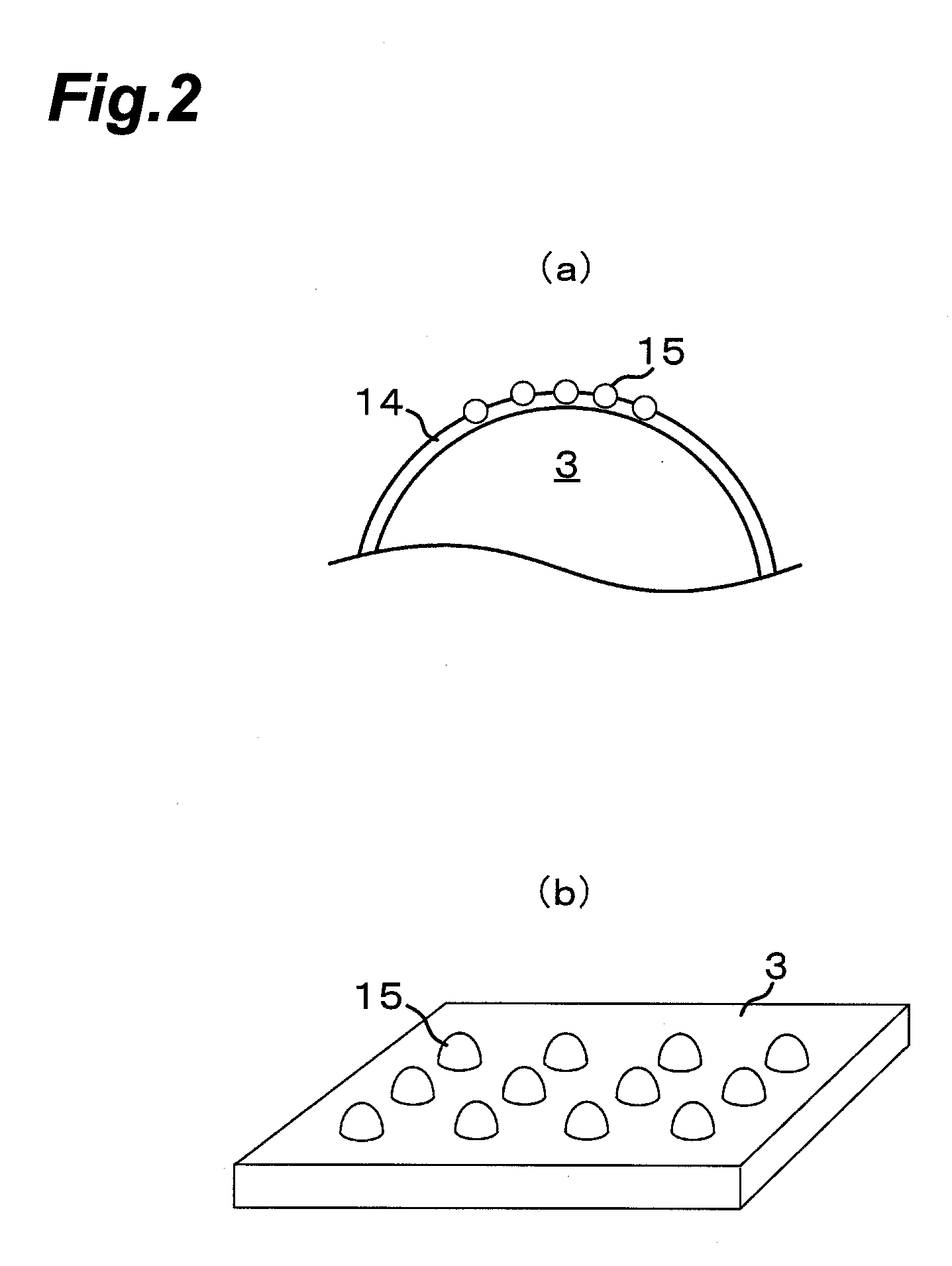Method for simultaneously producing carbon nanotubes and hydrogen, and device for simultaneously producing carbon nanotubes and hydrogen
a technology of carbon nanotubes and hydrogen, which is applied in the direction of physical/chemical process catalysts, gas-gas reaction processes, cell components, etc., can solve the problems of short time that the catalyst remains in the reactor, poor space use in the reactor, and difficulty in increasing the spatial concentration of the catalyst, etc., to achieve efficient production, reduce the cost, and achieve the effect of large-scale production
- Summary
- Abstract
- Description
- Claims
- Application Information
AI Technical Summary
Benefits of technology
Problems solved by technology
Method used
Image
Examples
example 1
[0183]Example 1 of the present invention will be described. Here, alumina beads were used as a support, and an Al2O3 carrier was supported on the alumina beads. The Al2O3 carrier was sputtered on the alumina beads. The alumina beads had a diameter of 0.5 mm. The average film thickness of the Al2O3 carrier (carrier layer) was 15 nm. Then, Fe was supported on the Al2O3 carrier as a catalyst. This support was performed by sputtering-support. The Fe supported on the Al2O3 carrier had an average film thickness of 1.5 nm. This support was placed in a reactor, and while a source gas at atmospheric pressure with a 1.1 vol % C2H2 / 26 vol % H2 / 0.06 vol % H2O / Ar balance was fed to the reactor, carbon nanotubes and hydrogen were synthesized in a fluidized bed state.
[0184]The reactor is made of quartz glass shown in FIG. 6, and is a vertical CVD reactor which can be used either as a fixed bed or as a fluidized bed. The temperature of a reaction portion in the reactor was 820° C. The feed of the s...
example 2
[0185]Example 2 of the present invention will be described. Here, alumina beads were used as a support. The alumina beads had a diameter of 0.5 mm. The alumina beads were impregnated with an aluminum nitrate aqueous solution, and then dried and fired to support an Al2O3 carrier on the alumina beads. The alumina beads on which the Al2O3 carrier was supported were impregnated with a ferric nitrate aqueous solution, and then dried and fired to support Fe particles on the Al2O3 carrier on the alumina beads. This support was placed in a reactor, and while a source gas at atmospheric pressure with a 1.1 vol % C2H2 / 26 vol % H2 / 0.06 vol % H2O / Ar balance was fed to the reactor, carbon nanotubes and hydrogen were synthesized in a fluidized bed state.
[0186]The reactor is made of quartz glass shown in FIG. 6, and is a vertical CVD reactor which can be used either as a fixed bed or as a fluidized bed. The temperature of a reaction portion in the reactor was 820° C. The feed of the source gas at ...
example 3
[0187]Example 3 of the present invention will be described. Here, alumina beads were used as a support. The alumina beads had a diameter of 0.5 mm. A reactor is one made of quartz glass shown in FIG. 6, and is a vertical CVD reactor which can be used either as a fixed bed or as a fluidized bed. The alumina beads were introduced into the reactor, and then, the reactor was heated to 820° C. and held. An aluminum isopropoxide vapor with Ar as a carrier gas was introduced into the reactor for 3 minutes to support an Al2O3 carrier layer on the alumina beads. Next, a ferrocene vapor with Ar as a carrier gas was introduced into the reactor for 1 minute to support Fe catalyst particles on the Al2O3 carrier layer.
[0188]Next, a source gas was fed onto the alumina beads on which the catalyst was supported, held in the reactor at high temperature, to perform the simultaneous synthesis of carbon nanotubes and hydrogen. The feed of the source gas at atmospheric pressure was performed in a feed am...
PUM
| Property | Measurement | Unit |
|---|---|---|
| Width | aaaaa | aaaaa |
| Width | aaaaa | aaaaa |
| Frequency | aaaaa | aaaaa |
Abstract
Description
Claims
Application Information
 Login to View More
Login to View More - R&D
- Intellectual Property
- Life Sciences
- Materials
- Tech Scout
- Unparalleled Data Quality
- Higher Quality Content
- 60% Fewer Hallucinations
Browse by: Latest US Patents, China's latest patents, Technical Efficacy Thesaurus, Application Domain, Technology Topic, Popular Technical Reports.
© 2025 PatSnap. All rights reserved.Legal|Privacy policy|Modern Slavery Act Transparency Statement|Sitemap|About US| Contact US: help@patsnap.com



